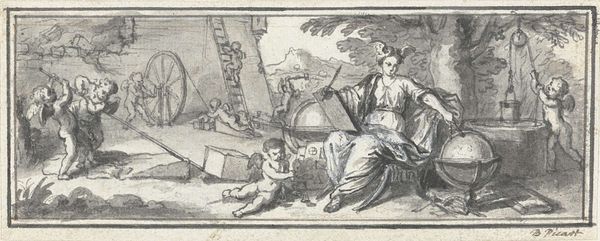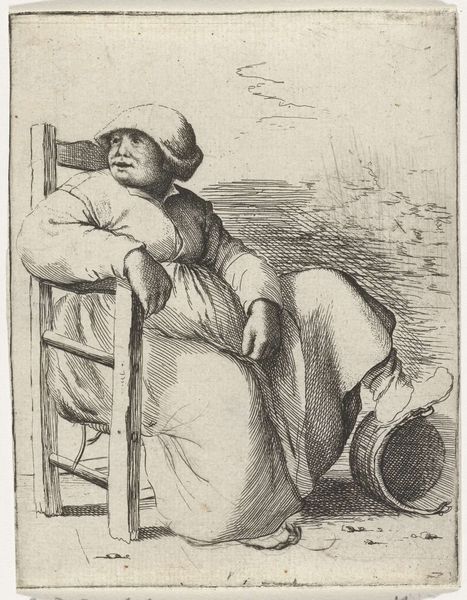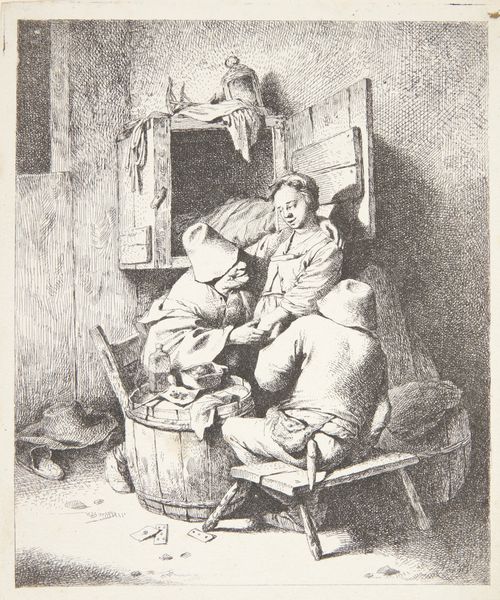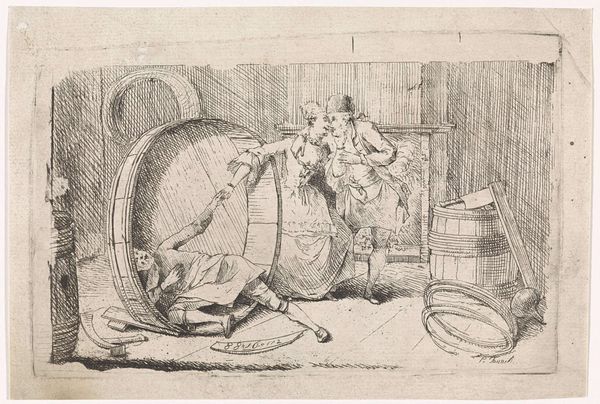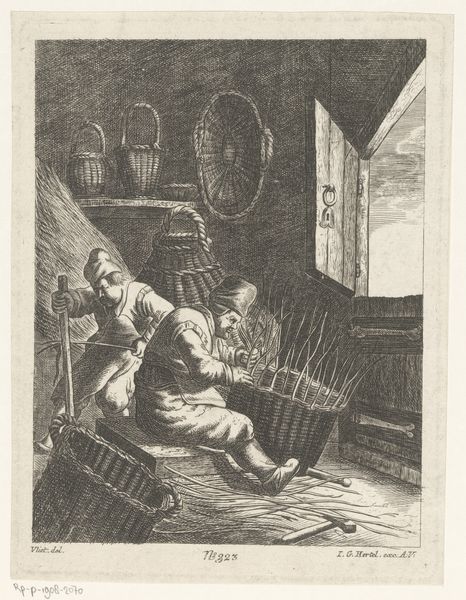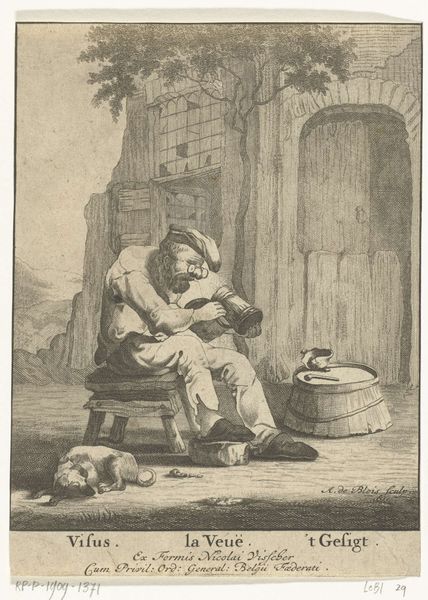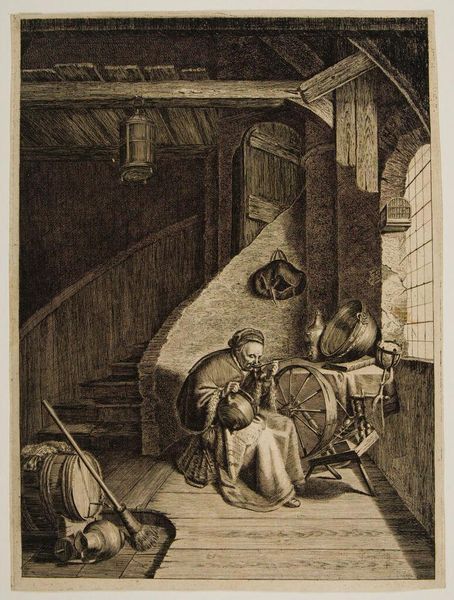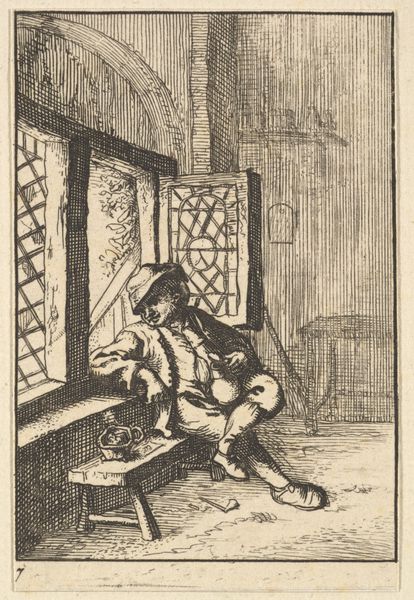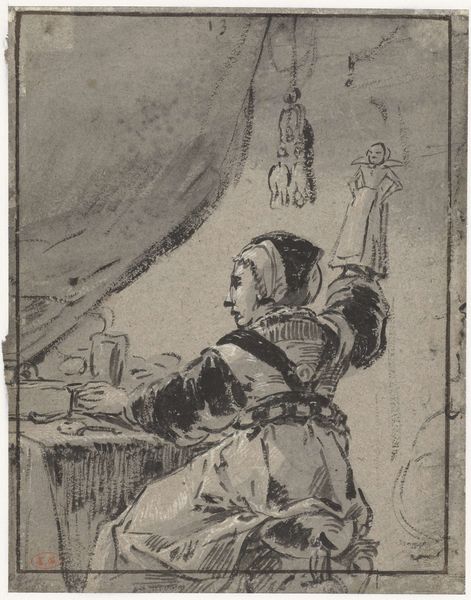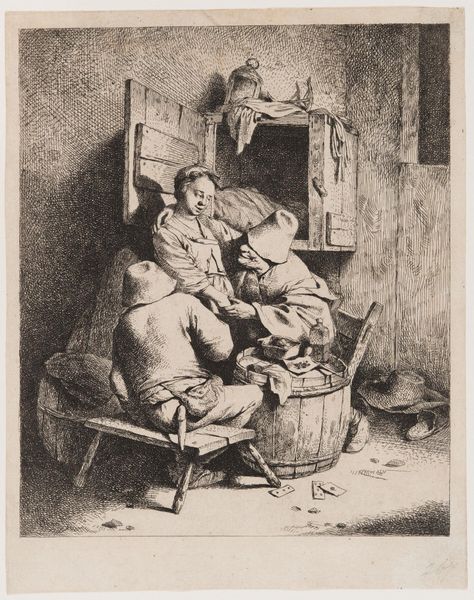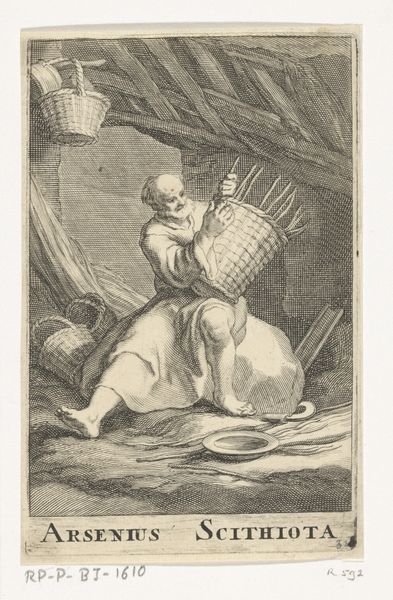
drawing, ink
#
portrait
#
pencil drawn
#
drawing
#
pencil sketch
#
caricature
#
ink
#
pencil drawing
#
portrait drawing
#
genre-painting
#
realism
Dimensions: height 117 mm, width 155 mm
Copyright: Rijks Museum: Open Domain
Editor: This drawing, "Liggende man, leunend op een zak" from 1787 by Abraham van Strij, depicts a man resting against what looks like a sack. The somber grays and browns create a rather melancholic mood. I am curious, what cultural narratives do you see reflected in this image? Curator: The figure's posture, his hat, and the props—the sack, barrel, even that cannon or mortar—become symbols. He seems a laborer, his sack a burden, leaning against implements of industry or perhaps even conflict. Think about what the barrel might signify. Is it a container of provisions, of trade? Or something else? The mortar points towards power and possible violence. Editor: That’s interesting; I was so focused on the weariness of the man I hadn’t considered the objects as symbols of labor or something even darker like war. Is it usual to see genre scenes presented with this sort of symbolic density? Curator: Van Strij and his contemporaries were working within a visual language inherited from the Dutch Golden Age but adapting it. Genre scenes, while appearing to depict everyday life, are often carefully constructed to convey moral or social messages. The cannon hints at the turbulent times. What continuities or disruptions can you perceive by contrasting this imagery with its earlier symbolic forms? Editor: It makes me think of how easily symbols shift their meanings. That cannon could signify protection, but viewed a different way, destruction. I guess the power of images really lies in their flexibility and resonance across time. Curator: Precisely. We project our own understanding and experiences onto them, shaping their story in our own time. This is why looking at the cultural history of images is such a worthwhile venture.
Comments
No comments
Be the first to comment and join the conversation on the ultimate creative platform.
